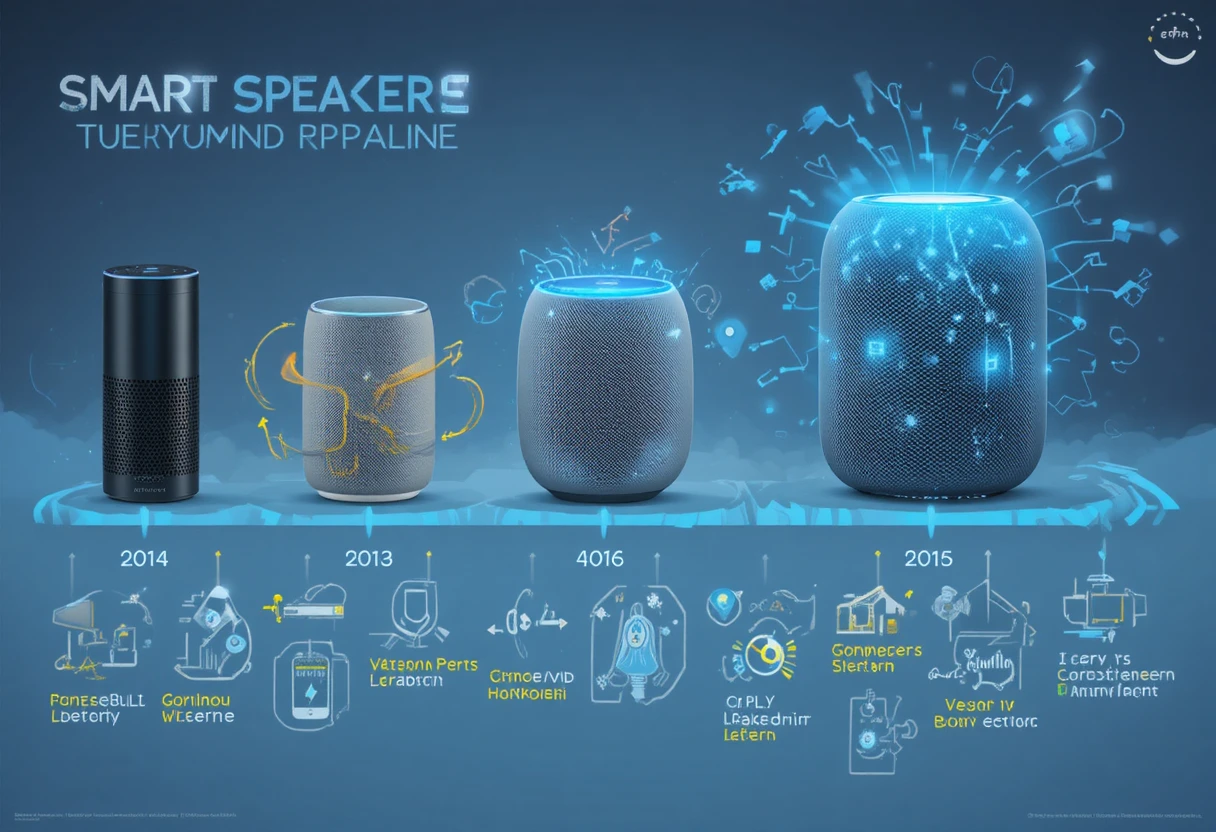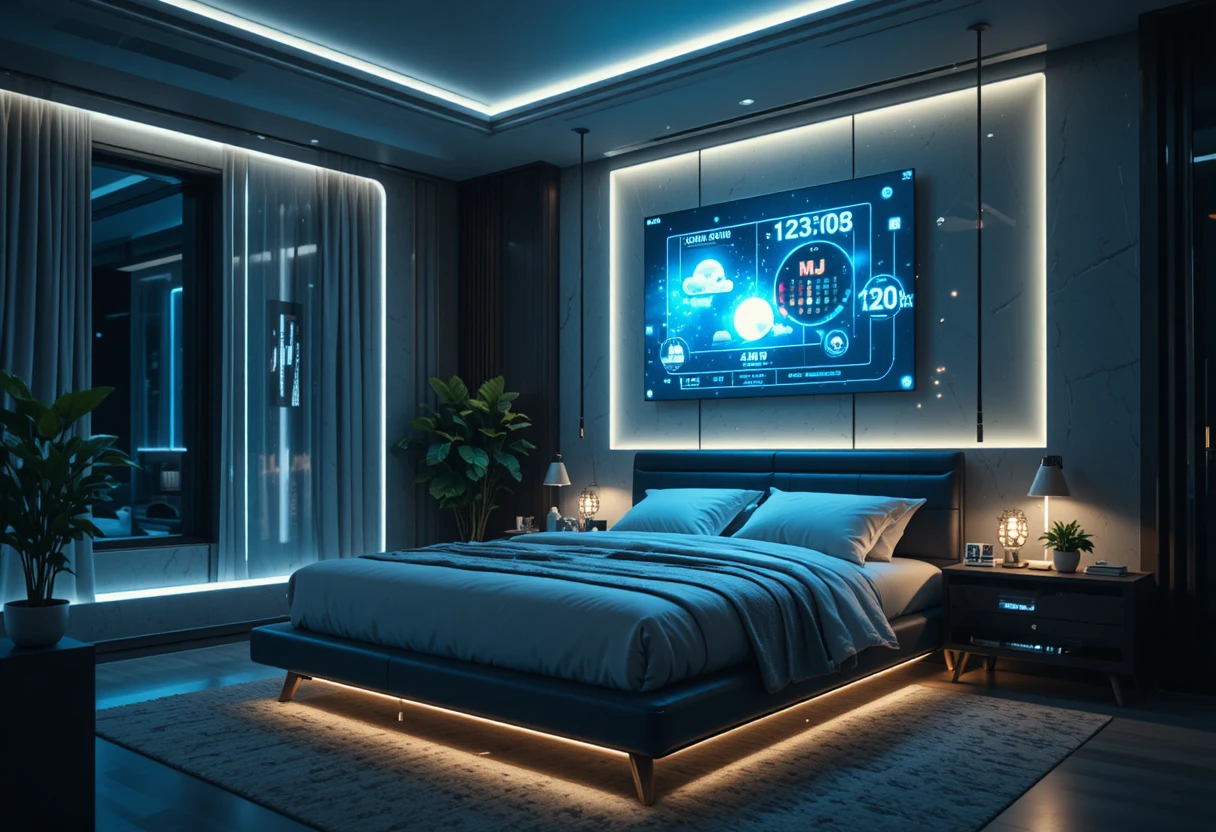Smart speakers have revolutionized how we interact with technology, turning voice commands into a seamless part of daily life. By 2025, these devices are more than just audio gadgets; they serve as central hubs for smart homes, entertainment systems, and personal assistants. Powered by advanced artificial intelligence (AI), smart speakers like Amazon Echo, Google Nest, and Apple HomePod process natural language, control connected devices, and provide real-time information. The global smart speaker market has surged to over $20 billion, with adoption rates exceeding 50% in households across North America and Europe. This 3000-word post explores the history, technology, popular models, applications, trends, societal impacts, future prospects, and challenges of smart speakers, highlighting their transformative role in 2025. Structured with clear headings, this article provides an in-depth look at how these devices are shaping our connected world.
Introduction to Smart Speakers
Smart speakers are wireless, voice-activated devices that use AI to respond to user commands, play music, set reminders, and integrate with other smart home ecosystems. Unlike traditional speakers, they incorporate microphones, processors, and connectivity features to enable hands-free operation. In 2025, smart speakers are integral to the Internet of Things (IoT), allowing users to control lights, thermostats, and security cameras with simple phrases like “Hey Google, dim the lights.”
The rise of smart speakers is tied to advancements in voice recognition and natural language processing (NLP). Early models focused on basic tasks, but today’s devices leverage machine learning to understand context, accents, and even emotions. With privacy features like on-device processing and mute switches, they address user concerns while enhancing convenience. The market is dominated by tech giants, but niche players are emerging with specialized features, such as eco-friendly designs or integration with health monitoring systems.
Adoption has been fueled by affordability and accessibility. Entry-level models cost under $50, making them ubiquitous in homes, offices, and even vehicles. In 2025, smart speakers are projected to reach 500 million units worldwide, per a Statista report, driven by integration with streaming services, e-commerce, and remote work tools. However, debates around data privacy and energy consumption continue to influence their development.
History and Evolution of Smart Speakers
Early Beginnings
The concept of voice-activated devices dates back to the 1960s with IBM’s Shoebox, an early speech recognition system that could understand 16 words. However, practical smart speakers emerged in the 2010s. Amazon pioneered the category with the Echo in 2014, introducing Alexa as a virtual assistant capable of playing music, answering questions, and controlling smart lights. This device used far-field microphone arrays to detect voices from across a room, marking a shift from touch-based interfaces.
Google followed in 2016 with the Google Home, powered by Google Assistant, which emphasized integration with search and productivity tools. Apple’s HomePod, launched in 2018, focused on premium audio quality with Siri integration. These early models were limited by processing power and required cloud connectivity, leading to latency issues. By the early 2020s, improvements in edge computing allowed for faster responses.
The COVID-19 pandemic accelerated adoption, as remote work and home entertainment demands surged. In 2020, sales jumped 20%, with users relying on smart speakers for virtual meetings, recipes, and news updates. Early challenges included accuracy in noisy environments and limited language support, but iterative updates addressed these.
Mainstream Adoption and Advancements
By 2022, smart speakers had evolved into multi-room audio systems with screens, like the Amazon Echo Show. Integration with third-party services expanded, allowing control of over 100,000 compatible devices. In 2025, advancements include AI-driven personalization, where speakers learn user preferences for music playlists or shopping recommendations.
The evolution also saw the rise of open-source alternatives and international competitors. Sonos entered the fray with voice-enabled speakers in 2018, emphasizing high-fidelity sound. Chinese brands like Xiaomi and Baidu gained traction in Asia with affordable, localized models. Regulatory pressures, such as the EU’s GDPR, pushed for better data handling, leading to features like voice deletion commands.
Today, smart speakers are smarter than ever, with multimodal interactions combining voice, touch, and gestures. The journey from novelty to necessity reflects broader tech trends toward ambient computing, where devices anticipate needs without explicit commands.

Key Technologies in Smart Speakers
Hardware Components
At the core of a smart speaker is a high-quality microphone array, typically 6-8 microphones arranged in a circular pattern for 360-degree voice detection. These use beamforming technology to isolate the user’s voice from background noise. Speakers employ woofers and tweeters for rich audio, with models like the HomePod 2 using spatial audio for immersive sound.
Processors have advanced to include dedicated AI chips, such as Amazon’s AZ2 Neural Edge, enabling on-device processing for faster responses and reduced cloud dependency. Connectivity relies on Wi-Fi 6E and Bluetooth 5.3 for seamless integration with IoT devices. Some models incorporate sensors for temperature, humidity, and motion, turning them into environmental monitors.
Batteries in portable variants, like the Echo Dot with Clock, provide up to 10 hours of use. Displays on smart displays (a subset of smart speakers) use LCD or OLED screens for visual feedback, showing weather, calendars, or video calls.
Software and AI Integration
The magic of smart speakers lies in their software. Virtual assistants like Alexa, Google Assistant, and Siri use NLP to parse commands. In 2025, large language models (LLMs) like Gemini or Grok enhance conversational abilities, allowing complex queries like “Plan my week based on my calendar and weather.”
Machine learning algorithms adapt to user habits, improving accuracy over time. Privacy-focused features include end-to-end encryption for voice data and local processing for sensitive commands. Integration with APIs from services like Spotify, Netflix, and Uber enables a vast ecosystem.
Security protocols, such as two-factor voice authentication, prevent unauthorized access. Developers can create “skills” or “actions” for custom functionalities, expanding the device’s utility beyond out-of-the-box features.
Audio and Connectivity Enhancements
Audio processing uses digital signal processors (DSPs) for echo cancellation and noise reduction. Multi-room syncing allows synchronized playback across devices. In 2025, Matter protocol standardizes connectivity, ensuring compatibility between brands like Amazon, Google, and Apple.
Popular Models and Brands in 2025
Amazon’s Echo lineup dominates with models like the Echo Studio for premium sound and the Echo Dot for affordability. Google Nest Audio emphasizes sustainability with recycled materials, while the Nest Hub adds a screen for visual interactions. Apple’s HomePod Mini focuses on privacy and integration with the Apple ecosystem.
Sonos One offers audiophile-grade sound with support for multiple assistants. Emerging brands like Harman Kardon and Bose provide luxury options with superior acoustics. In Asia, Xiaomi’s Mi AI Speaker leads in budget segments, supporting Mandarin and regional dialects.
Comparisons often highlight audio quality, ecosystem lock-in, and price. For instance, the Echo Show 15 serves as a family hub with a 15-inch screen, while Google’s Nest Hub Max excels in video calling.
Applications and Uses of Smart Speakers
Home Automation and Productivity
Smart speakers act as command centers for smart homes. Users can say “Alexa, lock the doors” to control compatible locks or “Hey Siri, set the thermostat to 72 degrees.” Integration with platforms like Philips Hue for lighting and Nest for security creates automated routines, such as morning wake-up sequences with gradual lights and coffee brewing.
Productivity features include setting reminders, managing calendars, and sending messages. In 2025, remote work integration allows joining Zoom calls or checking emails via voice. Shopping lists sync with e-commerce, enabling voice-based purchases.
Entertainment and Media
Entertainment is a primary use case. Streaming music from Spotify or Apple Music responds to commands like “Play upbeat jazz.” Podcasts, audiobooks, and radio are accessible, with AI recommendations based on listening history.
Smart displays enable video streaming from Netflix or YouTube. Multi-room audio creates whole-home sound systems for parties. Gaming integrations, like trivia or interactive stories, add fun elements.
Health, Education, and Accessibility
Health applications include medication reminders and integration with wearables for fitness tracking. In 2025, speakers monitor sleep patterns via connected beds or provide guided meditations.
Educationally, they answer questions, teach languages, or read bedtime stories. For accessibility, voice control aids those with mobility issues, while features like captioning on displays help the hearing impaired.

Current Trends in 2025
Sustainability is a key trend, with devices using recycled plastics and energy-efficient chips. AI advancements enable proactive assistance, like suggesting recipes based on fridge contents via connected appliances.
Privacy enhancements include biometric voice matching to distinguish users. Portable and outdoor models with IP67 water resistance expand usage. Integration with augmented reality (AR) glasses for visual overlays is emerging.
The rise of voice commerce, where users shop via speakers, has grown 25% year-over-year. Multilingual support now covers over 100 languages, broadening global appeal.
Societal Impacts of Smart Speakers
Smart speakers foster connectivity, reducing isolation for the elderly through voice calls and reminders. They promote energy efficiency by optimizing home systems, potentially cutting utility bills by 15%.
However, they contribute to screen-free time, encouraging verbal interactions. Economically, they boost e-commerce and create jobs in AI development. Culturally, they influence language use, with phrases like “Alexa” becoming household staples.
Concerns include over-reliance on tech, potentially diminishing skills like memory or navigation. Digital divides persist, as not all can afford or access these devices.
Future Prospects of Smart Speakers
By 2030, smart speakers may evolve into holographic assistants, projecting 3D interfaces. Brain-computer interfaces could enable thought-based commands. Integration with EVs for in-car control and health ecosystems for real-time monitoring are on the horizon.
Sustainability will advance with solar-powered models. AI will make them empathetic, detecting stress in voices and offering support. The metaverse will see virtual smart speakers in digital homes.

Challenges and Considerations
Privacy remains a top concern, with always-on microphones raising surveillance fears. Data breaches, though rare, could expose conversations. Regulations like California’s CCPA mandate transparency.
Technical issues include accent recognition biases, with error rates 20% higher for non-native speakers. Connectivity dependencies fail during outages. Environmental impact from manufacturing and e-waste is scrutinized.
Accessibility gaps exist for those with speech impairments. Competition may lead to ecosystem fragmentation, frustrating users.
Conclusion
In 2025, smart speakers are indispensable, blending AI, connectivity, and convenience to enhance lives. From humble beginnings to future holographic visions, they embody tech’s evolution. Balancing innovation with privacy and inclusivity will ensure their positive impact. As voice interfaces proliferate, smart speakers will continue to echo the future of human-tech interaction.